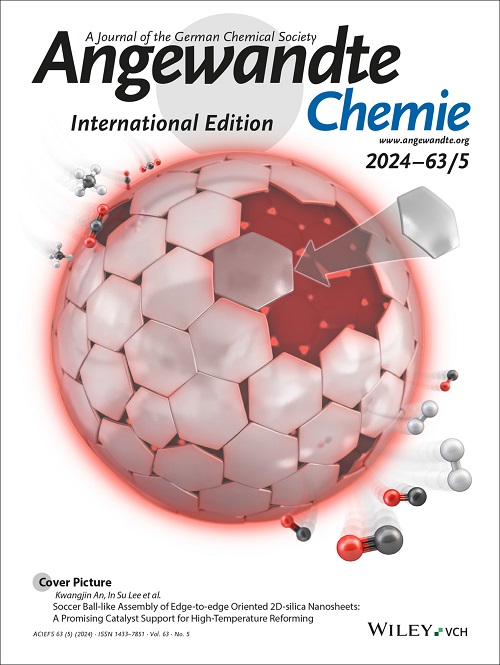玻璃样羧酸基配位聚合物的结晶辅助合成策略
IF 16.1
1区 化学
Q1 CHEMISTRY, MULTIDISCIPLINARY
引用次数: 0
摘要
本文章由计算机程序翻译,如有差异,请以英文原文为准。
A Capping-assisted Strategy for Synthesis of Glass-like Carboxylate-based Coordination Polymers
The direct preparation of glass-like carboxylate-based coordination polymers (CPs) possessing continuous internal structure and transparency is challenging due to the lack of control on coordination kinetics and subsequently the range of order. Herein, a capping-assisted strategy was presented to control the molecular assembly during the metal-ligand coordination in the solution and to inhibit the long-range of order hence building glass-like CPs (g-CPs) mimicking the polymerization process. 1,3,5-benzene tricarboxylate (BTC) ligand was used to connect the copper cations (Cu2+) into metal-organic complexes of different Cu: BTC ratios (metal-organic pool) in presence of an excess of triethyl amine as a capping agent. Concentrating the Cu-BTC complexes and further drying under mild conditions induced the decapping process which triggered the random crosslinking between the free carboxylate and Cu2+ to form a boundary-free continuous internal structure. The as-prepared Cu-BTC g-CP exhibited an approximately similar fine structure like its crystalline counterpart (HKUST-1), which facilitated solvent and thermal-induced crystallization. Due to the internal structure continuity, the g-CP possesses ceramic-like hardness and wear resistance and plastic-like resilience. This capping-assisted strategy has been successfully extended to Ni-BTC and Fe-BTC systems under mild conditions and thus presenting a general method for the formation of glass-like carboxylate-based CPs.
求助全文
通过发布文献求助,成功后即可免费获取论文全文。
去求助
来源期刊
CiteScore
26.60
自引率
6.60%
发文量
3549
审稿时长
1.5 months
期刊介绍:
Angewandte Chemie, a journal of the German Chemical Society (GDCh), maintains a leading position among scholarly journals in general chemistry with an impressive Impact Factor of 16.6 (2022 Journal Citation Reports, Clarivate, 2023). Published weekly in a reader-friendly format, it features new articles almost every day. Established in 1887, Angewandte Chemie is a prominent chemistry journal, offering a dynamic blend of Review-type articles, Highlights, Communications, and Research Articles on a weekly basis, making it unique in the field.

 求助内容:
求助内容: 应助结果提醒方式:
应助结果提醒方式:


